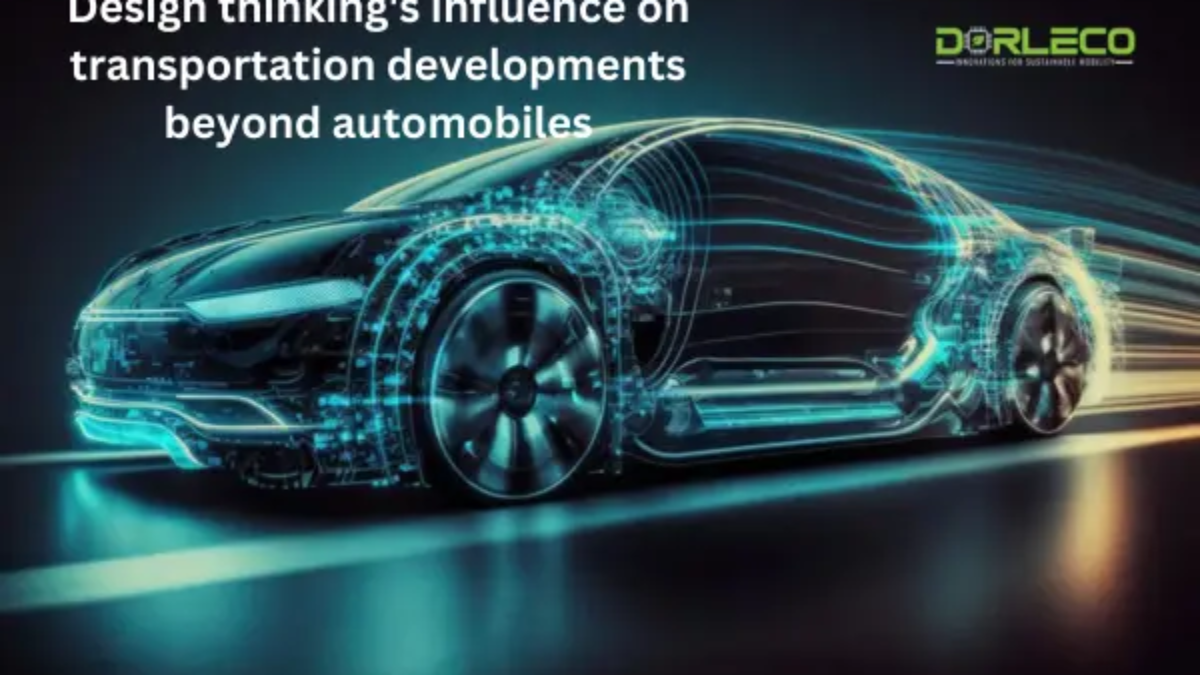Teams employ the dynamic design thinking technique to redefine challenges, analyze user demands, and challenge presumptions, and develop creative solutions through testing and prototyping. Its five stages—Empathize, Define, Ideate, Prototype, and Test—promote creativity and are especially useful for handling unclear problems. Through the adoption of design thinking and system design concepts, designers can go beyond traditional methods and steer towards a transportation future that is more sustainable, resilient, and equitable.
New Delhi: Our daily existence would not be possible without transportation development, which shapes our movements, interactions with others, and environmental effects. Our transportation choices determine the options and experiences we can access. On the other hand, a long-term dependence on fossil fuel-powered cars may have negative environmental effects. We must take creative, non-traditional techniques to meet these needs and challenges in the automotive industry. Transportation systems require a comprehensive rethinking that considers technological improvements, legislation, infrastructure, and customer behavior.
By giving priority to eco-friendly transportation options and incorporating smart technology into urban design techniques, we can reduce our environmental footprint while simultaneously improving accessibility and mobility. It needs cooperation amongst all parties involved—from government organizations to community organizers—to promote systemic change and just, durable transportation solutions. By doing this, we can design a time when transportation
Role of design thinking
Teams can use the dynamic process of design thinking to redefine challenges, question presumptions, understand user demands, and come up with creative solutions through testing and prototyping. Its five phases—Empathize, Define, Ideate, Prototype, and Test—encourage creativity and work especially well when dealing with unclear problems.
Teams try to comprehend user viewpoints during the Empathize phase, while the Define phase focuses on improving problem descriptions. Ideate promotes the transportation development of original solutions, whereas Prototype turns ideas into concrete forms. Lastly, the Test encourages iterative improvement by assessing prototypes based on user input.
When it comes to transportation, it entails comprehending the many requirements and experiences of users, conceiving up novel approaches, and developing working prototypes for problems that fundamentally solve problems. Stakeholders may rethink inclusive, effective, and sustainable transportation networks by adopting design thinking concepts, going beyond small adjustments.
Embracing system design
Transportation is more than just moving cars; it involves a lot of infrastructure, rules, laws, and social interactions. In system design, the entire transportation ecosystem is optimized rather than just specific parts. A holistic approach foresees cascading consequences, pinpoints critical sites of action, and cultivates synergies to improve system performance as a whole.
With this all-encompassing method, designers can produce solutions that support social conscience, sustainability, and accessibility in addition to improving mobility. Designers develop strategies that address urgent demands and advance the long-term welfare of communities and the environment by taking into account the interdependencies of diverse system components. In the face of changing difficulties, this holistic approach makes it possible for transportation solutions to be efficient, effective, and sustainable.
Integrating new technology
Transportation is about to undergo a radical change thanks to technological developments like electrification, mobility-as-a-service, and driverless cars. A careful analysis of social effects, legal frameworks, and human aspects is necessary for the successful integration of these advances.
To proactively address issues about safety, equity, privacy, and accessibility, designers must work across disciplines. Making sure these technologies are in line with more general objectives of sustainability and social welfare is imperative.
Beyond merely using vehicles and public transportation, a robust transportation system encompasses other modes as well. Innovative options including ride-sharing, active transportation, and micro-mobility are being investigated by designers. Cities may improve the overall quality of life for inhabitants, reduce traffic, and improve air quality by adopting a multimodal approach. Finding synergies between various modes and developing smooth, user-friendly experiences that persuade consumers to switch to more environmentally friendly and effective transportation options are made possible in large part by design thinking.
Also Read: EV production cost will be less expensive by 2027
Community engagement
The communities that transportation projects serve must be actively involved and supportive of the programs. Early and frequent stakeholder engagement is essential for designers to gather input, co-create solutions, and instill a sense of pride and ownership. By granting communities the authority to determine the course of their transportation futures, designers may guarantee that their interventions are suitable for the given environment, culturally aware, and consistent with the local goals and values.
Conclusion
The transportation industry has complex and ever-changing problems that need equally sophisticated and flexible solutions. Through the adoption of design thinking and system design concepts, designers can go beyond traditional methods and steer toward a transportation future that is more sustainable, resilient, and equitable.
We can create transportation systems that improve lives, promote community cohesion, and make a substantial contribution to the transportation development of a sustainable future for our planet by working together, being innovative, and having a strong commitment to human-centered design.

